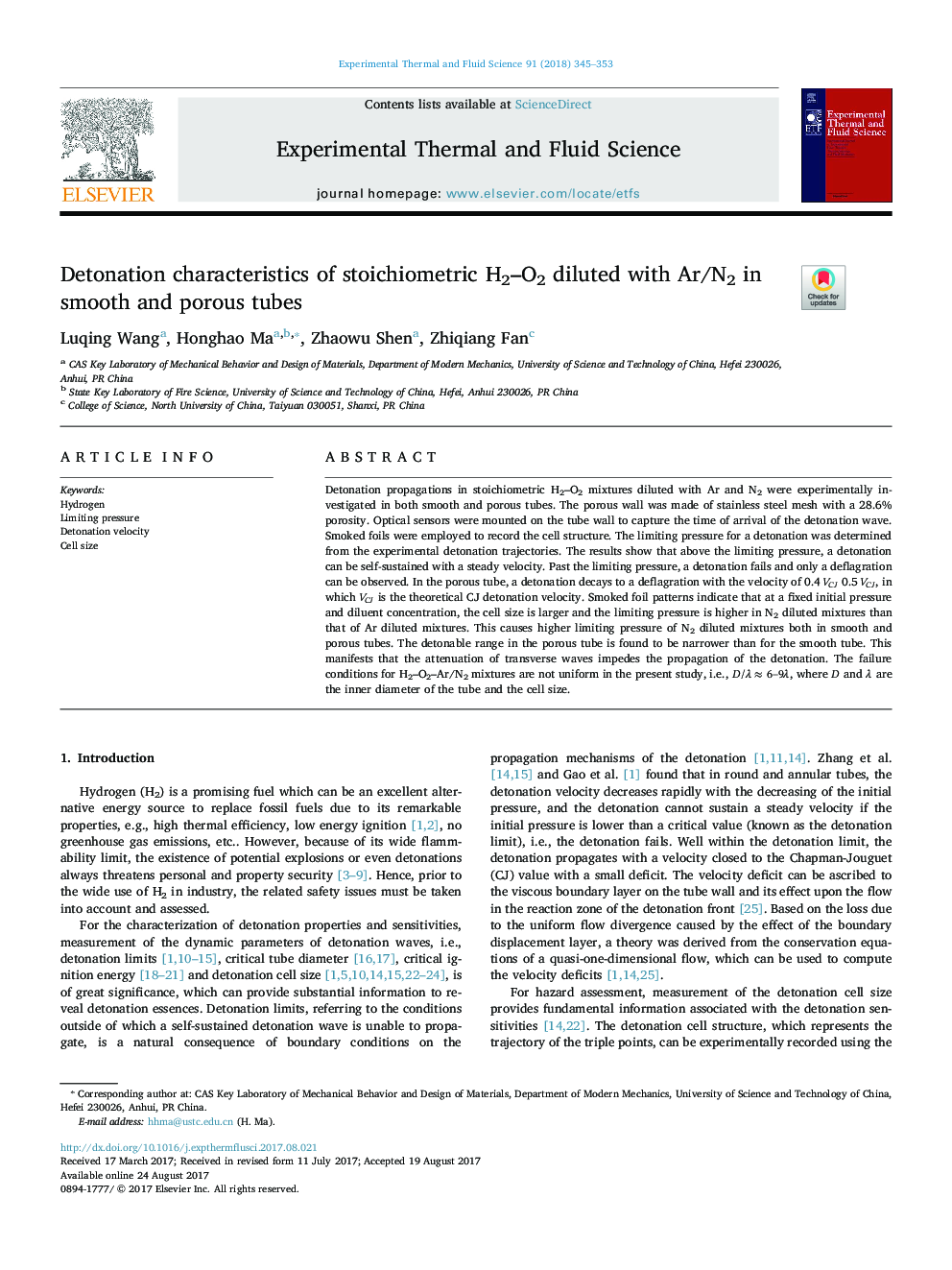| Article ID | Journal | Published Year | Pages | File Type |
|---|---|---|---|---|
| 7051908 | Experimental Thermal and Fluid Science | 2018 | 9 Pages |
Abstract
Detonation propagations in stoichiometric H2-O2 mixtures diluted with Ar and N2 were experimentally investigated in both smooth and porous tubes. The porous wall was made of stainless steel mesh with a 28.6% porosity. Optical sensors were mounted on the tube wall to capture the time of arrival of the detonation wave. Smoked foils were employed to record the cell structure. The limiting pressure for a detonation was determined from the experimental detonation trajectories. The results show that above the limiting pressure, a detonation can be self-sustained with a steady velocity. Past the limiting pressure, a detonation fails and only a deflagration can be observed. In the porous tube, a detonation decays to a deflagration with the velocity of 0.4 VCJ 0.5 VCJ, in which VCJ is the theoretical CJ detonation velocity. Smoked foil patterns indicate that at a fixed initial pressure and diluent concentration, the cell size is larger and the limiting pressure is higher in N2 diluted mixtures than that of Ar diluted mixtures. This causes higher limiting pressure of N2 diluted mixtures both in smooth and porous tubes. The detonable range in the porous tube is found to be narrower than for the smooth tube. This manifests that the attenuation of transverse waves impedes the propagation of the detonation. The failure conditions for H2-O2-Ar/N2 mixtures are not uniform in the present study, i.e., D/λâ6-9λ, where D and λ are the inner diameter of the tube and the cell size.
Keywords
Related Topics
Physical Sciences and Engineering
Chemical Engineering
Fluid Flow and Transfer Processes
Authors
Luqing Wang, Honghao Ma, Zhaowu Shen, Zhiqiang Fan,
